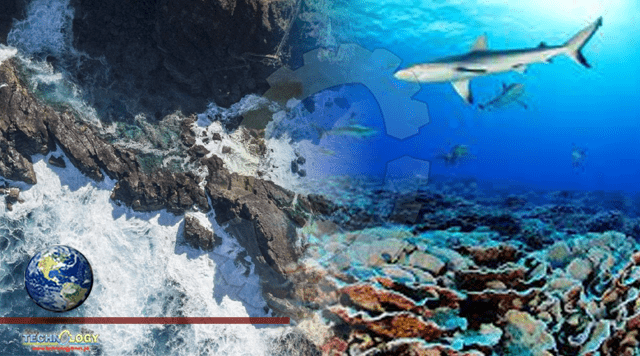The Pitcairn islands have some of the cleanest waters in the world, a few of the plane’s remaining pristine coral reefs and abundant sea life. It is believed to be home to more than 1200 species of fish, marine mammals and birds.

By Andrea Vance
They are some of the most remote islands in the world, a safe harbour where the mutinous crew of HMS Bounty hid undiscovered for nearly 20 years.
But now a network of underwater cameras will put the Pitcairn Islands waters under constant surveillance.
It’s part of an effort to protect an 834,000 sq km marine reserve established around the four islands that make up the group.
The cameras will make up part of the world’s largest ocean wildlife monitoring systemto help protect life below water.
In September 2012, Pitcairn Council voted unanimously to create the marine protected area (MPA) but since the islands are administered by the United Kingdom, the new reserve required the support of the British government.
That came in 2015, when it was designated the world’s largest continuous marine reserve. It is now the third largest.
The islands have some of the cleanest waters in the world, a few of the plane’s remaining pristine coral reefs and abundant sea life. It is believed to be home to more than 1200 species of fish, marine mammals and birds.
The Pitkerners wanted to protect their waters from illegal fishing from foreign fleets and a “no take” zone was established.
Since 2016, an oceanic drone has been used to keep watch for unauthorised fishing.
The network of underwater camera rigs – known as Baited Remote Underwater Video Stations or BRUVS – is being set up as part of the UK Government Blue Belt programme, which covers more than four million sq km of ocean.
The BRUVs are made up of two small action cameras and record all creatures that appear in their overlapping field of view. They’ve been used in 70 surveys in 35 international locations since the early 2000s.
They will observe species in ten overseas territories: Pitcairn, Ascension, St Helena, Tristan da Cunha, British Indian Ocean Territory, Cayman Islands, the British Virgin Islands, Anguilla, Montserrat and within the British Antarctic Territory.
In a statement, UK Prime Minister Boris Johnson said: “The marine wildlife living along the coastlines of our Overseas Territories is some of the most spectacular in the world, and we must do more to protect it.
“Cutting-edge technology, such as these cameras, will be vital in our crusade against climate change. Our marine experts are world-leaders in protecting our ocean and the myriad of species that live within it.”
Why? Because with the pandemic situation constantly changing, it’s easy for misinformation and rumours to take hold. You can rely on Stuff’s journalists to question the decision-makers, interview experts, and use eyewitness reporting to answer your key questions with facts and context.
Stuff’s ethical reporting is built on accuracy, fairness and balance. With millions of New Zealanders turning to us every day, it’s our mission to make Aotearoa a better place.
But the way journalism is funded is changing and we need your help to sustain local newsrooms.
If Stuff is a regular part of your day, please consider becoming a supporter.
Pitcairn is the only inhabited island, with Henderson, Ducie and Oeno scattered across several hundred kilometres of the Pacific Ocean.
Henderson is also a UNESCO World Heritage Site, but the islanders were distressed to discover in 2015 that it is covered in plastic trash, washed up from all around the world.
An expedition in 2019 collected six tonnes of rubbish from one beach, but weather and tidal patterns prevented the recovery.
Originally published at Stuff